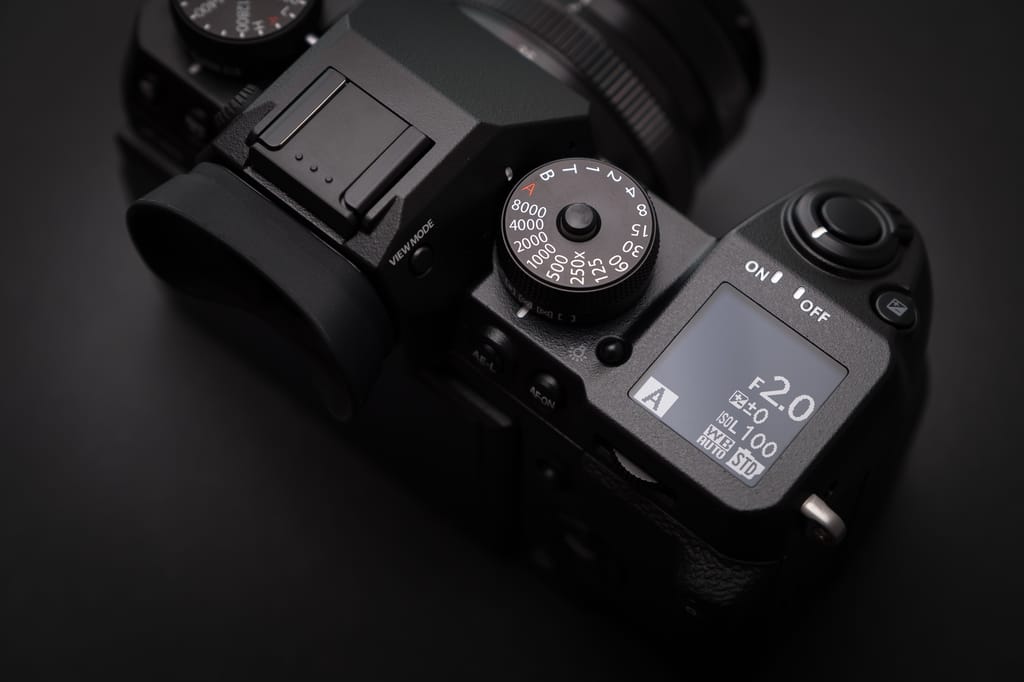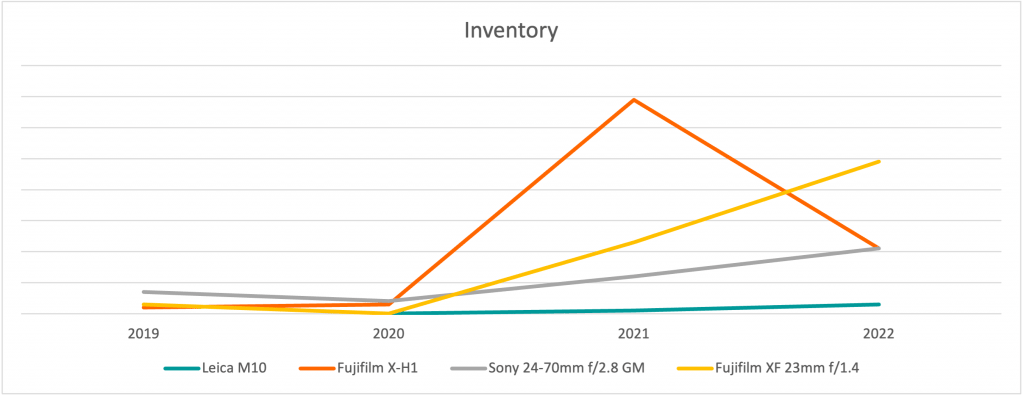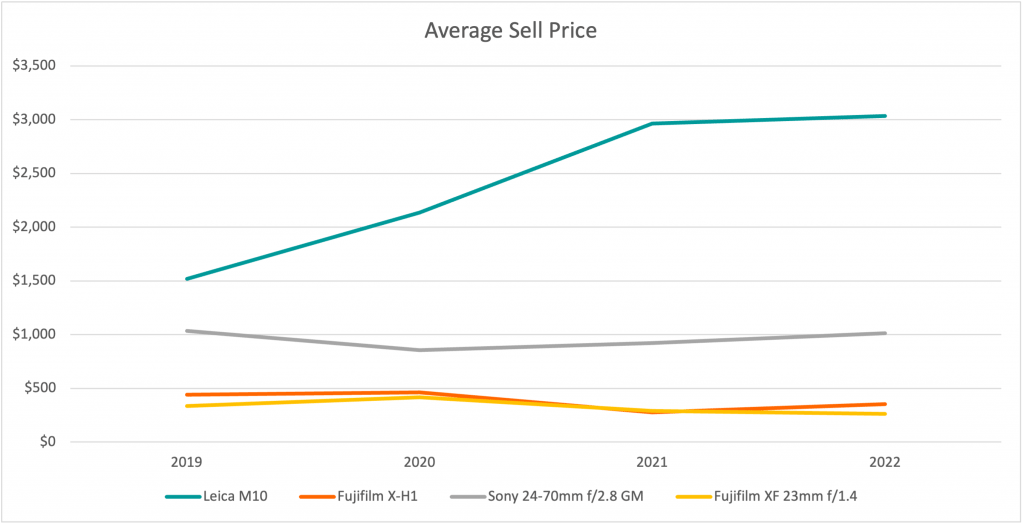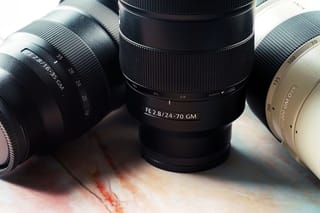
Welcome back to the KEH Tilt-Shift Report, where I share exclusive data and unique insights into the latest trends in camera gear buying, trading, and selling.
Previously, I covered the condition of most used equipment, which accessories are still relevant, and popular legacy SLR lenses.
This time around, let’s see what happens to an item’s value when a new version becomes available.
The Tilt
Starting a new product line is a big investment for camera manufacturers, and if it hits, they’re likely to stay with it for as long as they can to maximize the return on that investment. For instance, this can translate into a product line with a single and constant lens mount to be active for decades.
At the same time, technology moves at a fast rate, which often leads to manufacturers not only expanding a product line, but also revisiting and refreshing products once they no longer meet current standards.
We see this most often with camera bodies, which get updated with increased frequency, but the same is true for lenses over time. And as competition has stiffened over the last decade, this cycle has only been accelerating.
Take for example the Canon EF 24-70mm f/2.8 L. This popular DSLR zoom was introduced in 2002, and it took a full ten years before Canon updated it with the Mark II version in 2012. In contrast, it barely took six years for Sony to update its mirrorless FE 24-70mm f/2.8 GM, which originally came out in 2016. The new version hit shelves just in April of this year, in fact.
This acceleration has some photographers worried because, while they’re happy to get new and improved products on a regular basis, it also seemingly shortens the usability and value of their current setup, and can lead to some tough financial decisions on their part.
So, with this in mind, let’s look at our numbers to see just how much an item’s value is impacted when a product update is released.
The Shift
For this exercise, I took four products which have been, or are soon to be, updated in 2022. Two camera bodies—the Leica M10, and the Fujifilm X-H1. And two lenses—the aforementioned Sony 24-70mm f/2.8 GM, and the Fujifilm XF 23mm f/1.4.
First, let’s look at our inventory for these items, and see how that’s changed over the last four years.

As you can see above, around 2020, our inventory for these items started growing considerably. Now, this may be due to several factors.
Could be that photographers affected by the pandemic started selling off their gear, or maybe we got an influx of refurbished gear from distributors, as big box retailers were dealing with a downturn. Could also be that we got a lot better at buying gear around that time.
All seem like feasible explanations, and they all surely contributed to the increase.
It’s curious to see the Fujifilm X-H1 with a pronounced spike, whereas the other items only seem to be steadily growing within our inventory, especially the Fujifilm 23mm f/1.4. That lens is the oldest item on the list, released in 2013. It’s been updated this year with a new linear motor and weather resistance.
Perhaps significant changes in price or demand has something to do with it, so let’s look at that next.

Here we see that the average price of the X-H1 hasn’t really changed too much. It started at around $795 in 2019, rose to $801 in 2020, fell to $757 in 2021, and currently stands around $738.
So, despite being a bit long in the tooth and widely available, demand for the X-H1 was able to keep up with the supply, and photographers deemed it a good value for the used price against what is currently available on the market.
The X-H2 has been rumored to be announced next week, so we’ll have to see how that affects things. But so far, the impending release of the newer version has not significantly affected the value of the original.
Keeping in the same brand, the XF 23mm f/1.4 changed a bit in average price over the last four years. Started at $580 in 2019, rose to a high $663 in 2020, fell again to $603 in 2021, and is currently sitting around $548 now that the updated version is available on the market. It’s still a great value considering the updated version retails new for around $900.
Of course, the used price of these items is only one side of the story. We also have to look at how much people are willing to sell these items for, so let’s see how average sell prices have changed.

Only one item, the Leica M10, has significantly appreciated over this time span. And it’s a bit of an anomaly, as seemingly, market forces had us severely underpaying for it back in 2019. But the other items have actually held on to their value quite well, despite reaching the end of their product lifecycles, at least according to the manufacturers.
The average price we were buying the Sony 27-70mm for in 2019 was $1,035, and that figure stands at $1,013 today, so that lens has not depreciated by much. Shows that it can pay off to get several more years of use out of some items without losing too much value, especially if you take good care of your gear.
The fact that we haven’t had to drop the buyback prices on these products may make you curious about how they’re selling overall, so let’s look at the annual units sold next.

Turns out we can afford to keep paying pretty well for these items because we’re not having any issue getting them out the door. In fact, they’re still selling pretty darn well despite not being the latest and greatest.
We sold nearly three times as many X-H1s in 2021 as we did in 2019. Sales of the M10 went up by 270%. The Fujifilm 23mm increased by 220%. And the Sony 24-70mm doubled as well. We’re buying enough of them to keep up with demand, and prices are stable, which means the market is still quite healthy for these items.
Ultimately, we know that there’s always a space for time-tested gear, and that photographers are smart enough to know what features work for them and which ones are not worth upgrading for.
When an item is updated by manufacturers, it doesn’t significantly hurt the previous version, at least not in the short term. If anything, it shows that the product line is still worth investing in, and that’s good news when you’ve bought into a system.
Inversely, if a manufacturer is not putting out updates for one of their product lines, that can significantly impact the value of the system as a whole, as it’s usually a bad sign for future viability.
Thoughts? As always, share them in the comments, and I’ll see you next month for another edition of the Tilt-Shift Report.




